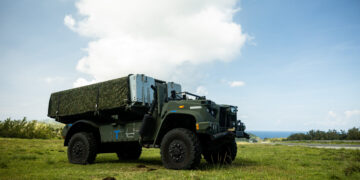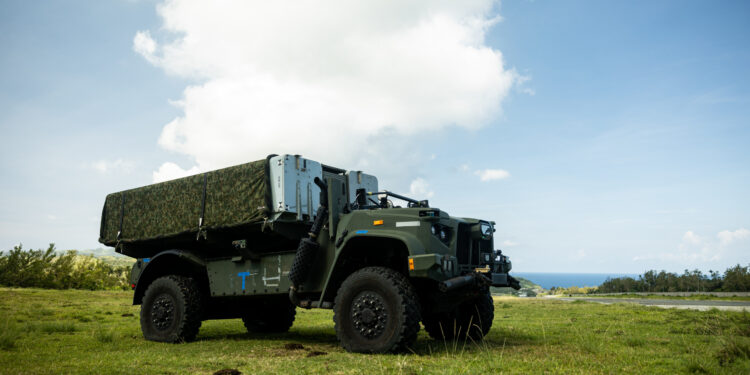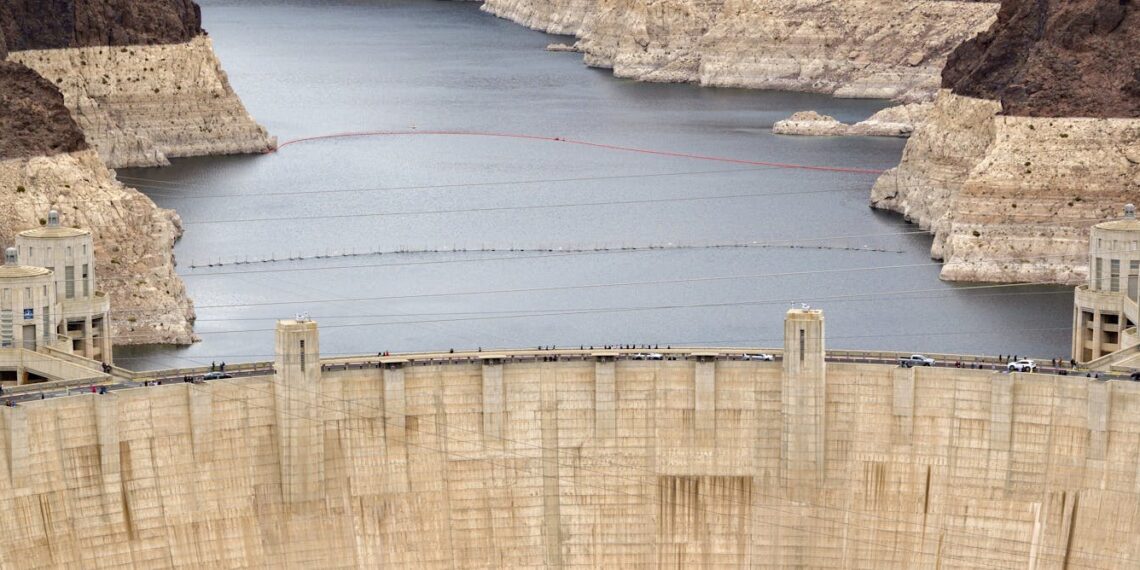Login to Continue Learning
A United States missile system capable of sinking warships is reportedly set to be deployed on a Japanese island during a planned joint war game, amid growing naval concerns from China.
“Specific details concerning equipment and training locations will be announced by Japan’s Ministry of Defense closer to the beginning of the exercise,” the III Marine Expeditionary Force—a U.S. Marine Corps unit based in Japan—told Newsweek.
Newsweek has also contacted the Chinese and Japanese defense ministries for comment.
### Why It Matters
Japan is part of a U.S. maritime containment strategy known as the First Island Chain, which includes Taiwan and the Philippines. This strategy aims to limit the operating range of China’s navy—the world’s largest by hull count—within East Asian waters in case of conflict.
China continues to expand its military presence beyond the First Island Chain by gradually increasing the scale of its warship deployments in the wider Western Pacific, including the simultaneous operation of two aircraft carriers on the eastern side of the island chain in June.
In response, the U.S. is strengthening its defense posture along the island chain. This year, the Philippines has hosted two American anti-ship missile systems—the Mid-Range Capability (MRC) and the Navy-Marine Expeditionary Ship Interdiction System (NMESIS).
#### What to Know
Japan Broadcasting Corporation (NHK) reported that the Ground Self-Defense Force and the U.S. military will conduct the exercise “Resolute Dragon” across Japan, including Okinawa Prefecture and Kyushu, from September 11 to 25.
Okinawa Prefecture is located in Japan’s southwestern waters between the East China Sea and the Philippine Sea. Meanwhile, Kyushu—situated north of Okinawa—is the southernmost of Japan’s four main islands in Northeast Asia.
The war game will test allies’ ability to defend remote Japanese islands, including potential NMESIS deployment on Ishigaki Island, part of the Sakishima island group in Okinawa Prefecture. The NMESIS is a missile system mounted on an unmanned vehicle that can carry up to two Naval Strike Missiles with a range over 115 miles.
The report noted that no live-fire drills will take place during the deployment of the NMESIS on the Japanese island.
“Specific details on equipment, locations, and timing during Resolute Dragon have not been finalized,” the III Marine Expeditionary Force told Newsweek on Monday. The previous iteration of the exercise was held from July 28 to August 7, 2024, across Japan.
The Japanese military frequently tracks and reports on China’s naval activities near Okinawa Prefecture, as Chinese vessels transit the Miyako Strait—which lies between Miyako Island and Okinawa Island—a major gateway for deployments beyond the First Island Chain.
On Saturday, a pair of Chinese warships—a destroyer and a frigate—were spotted passing through the Miyako Strait on a southeastward voyage from the East China Sea to the Philippine Sea, the Joint Staff of Japan’s Defense Ministry reported on Monday.
### What People Are Saying
“The U.S. Marine Corps remains in close coordination and planning with the Government of Japan to ensure all activities and training are conducted safely and responsibly…We remain committed to transparency with local communities, the Government of Japan, and our Allies and partners,” the U.S. III Marine Expeditionary Force told Newsweek on Monday.
“China has been swiftly increasing its national defense expenditures, thereby extensively and rapidly enhancing its military capability in a qualitative and quantitative manner and intensifying its activities in the East China Sea, including around the Senkaku Islands, and the Pacific,” reads Japan’s defense white paper 2025.
The Senkaku Islands are an islet group in the East China Sea, ruled by Japan but claimed by China and Taiwan as the Diaoyu Islands and Diaoyutai Islands, respectively.
### What Happens Next?
It remains to be seen whether the U.S. military will deploy other missile systems in Japan to bolster the ally’s defense, including the MRC and the Long-Range Hypersonic Weapon (LRHW), which were featured in a war game that took place in Australia last month.
📚 Reading Comprehension Quiz
What is the primary purpose of the U.S. missile system being deployed on a Japanese island during the joint war game?
Please login or register to take the quiz and earn points!



















